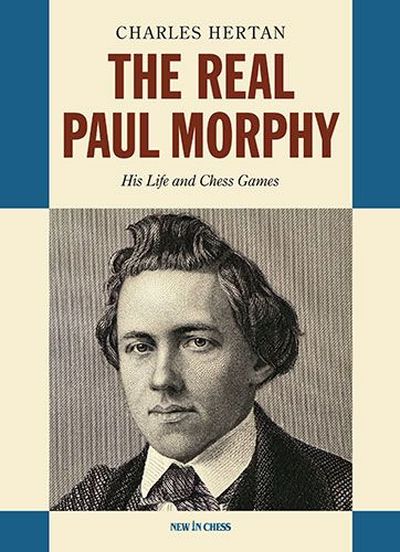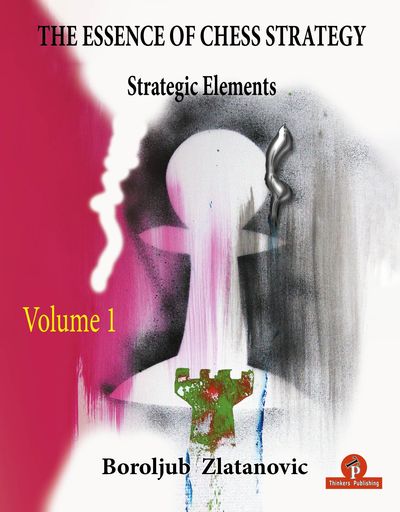Publisher: Chess Stars, 2014, Pages: 428, Paperback
We would like at first to explain to you the general concept of the opening set-up, which will be analysed in this book. This is how White plans to deploy his forces: the pawns on e4, d3, f4, the bishop on c4, one of the knights on c3 and the other on f3. What is the best way for him to realise his ideas? After 1.е4 e5, he can play immediately f2-f4, choosing the King’s Gambit, but White is reluctant to do this. We believe that Black can equalise in several different ways, therefore, White plans to accomplish this pawn-advance under more favourable circumstances.
He will have a difficult problem to solve – how to protect his e4-pawn, after Black’s response Nf6: – 2.Bc4, 3.d3 and then f4;– or 2.Nc3, 3.Bc4 and then f4. Both schemes have their adherents. What is the difference between them?
In the first line, Black is deprived of the possibility 3...Nxe4 (after 2...Nf6), but it seems this is the only plus in comparison to the second line. White has slowed down the tempo however, so that after 1.e4 e5 2.Bc4 Nf6 3.d3, Black has the time to advance d7-d5 after 3...c6.
On the other hand, by playing 2.Nc3 and 3.Bc4, White develops quickly his pieces and preserves the possibility to play immediately d2-d4, for example in the variation 2...Nf6 3.Bc4 c6 4.d4! He also wishes to react more energetically, for example against the set-up 2...Nf6 3.Bc4 Bc5, now White counters with the move 4.f4! There is another important point too. If White has included in his opening armour the Modern Vienna Game, he can use this knowledge when playing against the Alekhine Defence. This is what our next book will be devoted to – 1.e4 Nf6 2.Nc3!? Now, the move 2...e5 transposes to the Vienna Game and among the other schemes, we must only study additionally 2...d5 3.e5. For example here, after 3...Nfd7, instead of the habitual move 4.d4, leading to the French Defence, we will analyse the energetic move 4.e6!?, which will be definitely more to the liking of the fans of the active Vienna set-ups.
Why do we call this scheme the Modern Vienna Game? At first, in response to 2...Nf6 in the Vienna Game, White used to play immediately 3.f4, but it became evident that was not the right moment for this pawn-move. Following 3...d5, the position is quickly simplified and the game usually ends in a draw. Having this in mind, it is clear that White should better prevent 3...d5 and this is why he should play 3.Bc4, postponing the pawn-advance f2-f4 for a while. Following 3.Bc4, the game often transposes to the King’s Gambit Declined – 3...Nc6 4.d3 Bc5 5.f4 d6 6.Nf3.
This is the set-up White strives for – the bishop on c4, one of the knights on c3 and the other on f3, but only after the pawn has been already advanced to f4. Later, in similar positions, White can choose between two plans:
– to open the f-file (sometimes Black opens it himself with the move e5xf4...) and to increase the pressure on the semi-open f-file;
– to advance his pawn to f5 and to begin a pawn-offensive on the kingside. We should emphasize immediately that it would be essential for White in this case to hold on to the key-base – the e4-square.
This is in general how White’s basic plan looks like.
It may seem strange, but despite the fact that the move 2.Nc3 has been played for more than a hundred years, there has not been defined a clear-cut scheme for playing in this set-up. We had to make decisions how to play with White practically from the first several moves. Should he play immediately f4, or begin at first with d3? Should he advance his pawn to f5, or prefer a quick piece development? For example after 2... Nf6 3.Bc4 Bc5, should White play at first d3, fortifying his e4-pawn? We have come to the conclusion that the move 4.f4!? is more precise.
Still, after 4.f4 d6, there arises another question – 5.Nf3, or 5.d3? It often happens that there arise the same positions after these moves, but still, we had to analyse after which move White maintains a more convincing advantage if Black replies with the principled move 5...Ng4...
The Vienna set-up is aimed at a very aggressive play, which often includes sacrifices, but White prefers to be on the safe side, without burning all the bridges and to try to justify his actions from the point of view of positional play as well. This is how this usually happens. At first, he deploys his minor pieces to active positions, then he advances the thematic move f4, castles (usually on the kingside) and begins an attack only after all this. We should emphasize as a very positive moment that by choosing the Vienna Game, White follows his own line of playing, which does not happen after the move 2.Nf3. Black can choose then between the numerous variations of the Ruy Lopez (or the rather solid Steinitz Defence Deferred, or the super-solid Berlin Wall, or the sharp Marshall Attack). In addition, Black can go for the seemingly peaceful Petroff Defence.
Roman Ovetchkin – Sergei Soloviov
 Excerpt
Excerpt


